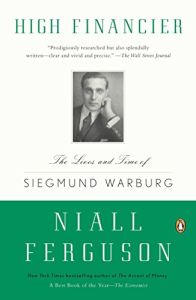Join getAbstract to access the summary!

Join getAbstract to access the summary!
Niall Ferguson
High Financier
The Lives and Time of Siegmund Warburg
Penguin Group (USA), 2011
What's inside?
Siegmund Warburg helped rebuild Europe after World War II, changed the course of international finance and built one of the 20th century’s most powerful banking empires.
Recommendation
This panoramic biography of Siegmund Warburg reveals a complex man who built international banking in response to the great turbulence of the 20th century. Given access to previously unavailable personal letters and diaries, Niall Ferguson, a history professor at Harvard, spent 12 years profiling this singular man, who was shaped by early-20th-century Prussian Europe and lived through World War I, the rise of Nazism, the dark years of the Holocaust and post-World War II reconstruction. The book’s title aptly describes Warburg’s “lives,” since he reinvented himself in the face of world and personal events. Ferguson artfully weaves Warburg’s motives, business environment and family intrigues into the political evolution of Western Europe and the US. getAbstract highly recommends this detailed, readable biography of an extraordinary man.
Summary
About the Author
Niall Ferguson teaches history at Harvard University and wrote Empire, The Cash Nexus, The Ascent of Money and several other books.






















Comment on this summary
thanks for your web site. it's the world best business library but i cant pay you because I live in Iran and I have no world account to pay you ! so I couldn't use your site.
regards
Ali